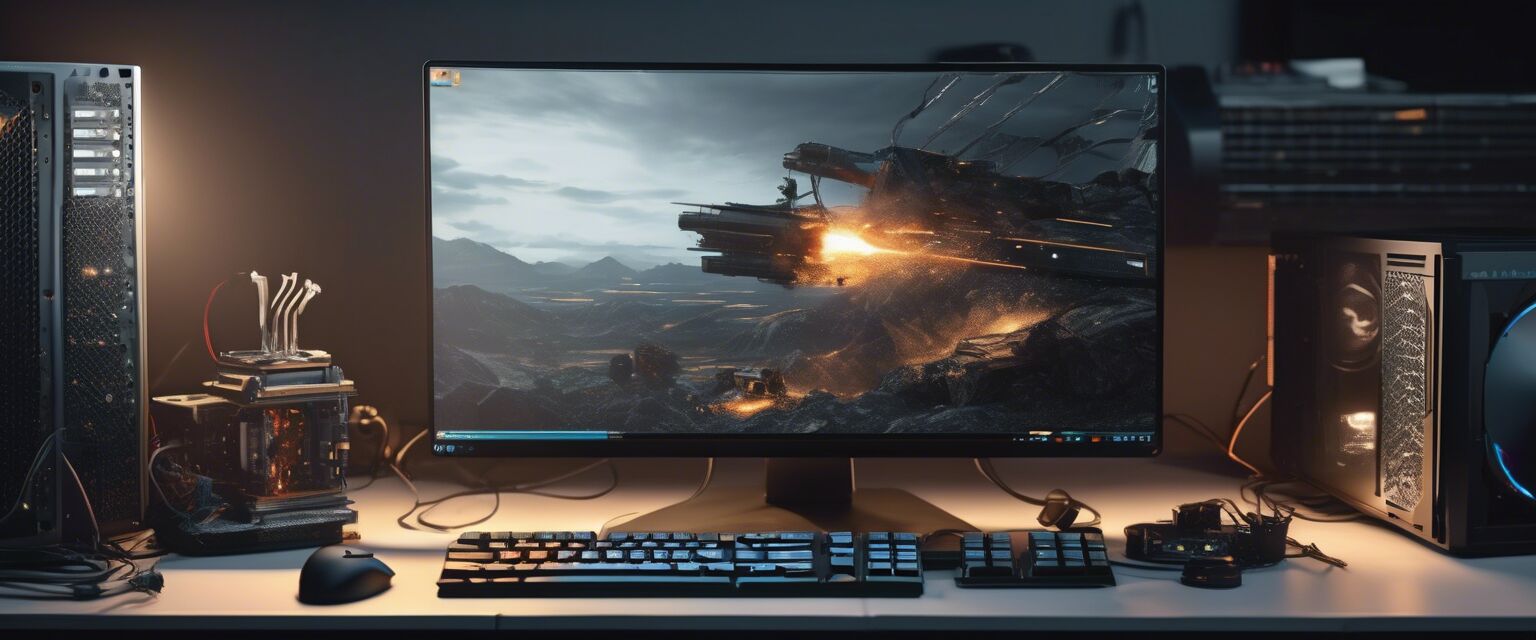
Troubleshooting common desktop PC issues
Key takeaways
- Identifying and diagnosing issues are the first steps in troubleshooting.
- Common symptoms can include slow performance, unexpected shutdowns, and hardware failures.
- Many problems can be resolved by performing simple checks and routine maintenance.
- Knowing where to find solutions or seek professional help is crucial for effective troubleshooting.
Desktop PCs are powerful tools that can serve a wide range of purposes, from gaming to professional work. However, like any technology, they can encounter issues that disrupt their performance. In this article, we will explore common problems that users may face with their desktop PCs and provide guidance on troubleshooting them effectively. By taking the right steps, you can enhance your PC experience and prolong the lifespan of your device.
Common desktop PC issues
Before diving into solutions, let's identify some common issues that desktop PCs may experience:
- Slow performance: Tasks that take longer than expected.
- Unexpected shutdowns: The PC turns off without warning.
- No display: The monitor remains blank.
- Overheating: The PC runs hot or shuts down to cool off.
- Noise: Unusual sounds coming from the system.
Diagnosing the issue
Start by identifying the symptoms. Diagnosing the problem correctly is vital for effective troubleshooting. Here are some steps to follow:
- Check all cables and connections to ensure everything is plugged in properly.
- Look for error messages or blinking lights that may indicate a specific issue.
- Listen for any peculiar sounds, such as grinding or clicking, which could signify hardware failure.
- Monitor performance metrics, using tools to check CPU and memory usage.
Common troubleshooting steps
Once you have diagnosed the issue, try these common troubleshooting steps:
| Issue | Troubleshooting Steps |
|---|---|
| Slow performance |
|
| Unexpected shutdowns |
|
| No display |
|
| Overheating |
|
| Noise |
|
When to seek professional help
Sometimes, you may encounter issues that require expertise beyond basic troubleshooting. Look for signs like:
- Persistent errors that do not resolve after multiple attempts.
- Physical damage to hardware components.
- Complex software issues that may involve expert technical support.
If you find yourself overwhelmed, visiting our Buying Guides section can help you make informed decisions when considering professional repairs or new equipment.
Maintenance tips for longevity
Regular maintenance is crucial for preventing issues. Here are some tips to keep your desktop PC in optimal condition:
- Perform regular updates for your operating system and software.
- Run disk cleanup and defragmentation periodically.
- Backup important data to prevent loss.
- Keep the interior dust-free by cleaning it regularly.
For more insights on improving performance, consider visiting our Expert Tips category.
Conclusion
Troubleshooting common desktop PC issues can be straightforward with the right approach. By diagnosing problems accurately and performing routine maintenance, you can enjoy a smoother and more efficient computing experience. Remember that keeping informed will empower you to make the best decisions for your technology. If you encounter challenges you cannot solve, don't hesitate to reach out for professional help.
Pros
- Improves overall performance of the PC.
- Cost-effective solutions for common issues.
- Enhances lifespan of the desktop.
Cons
- Some issues may require professional intervention.
- Time-consuming troubleshooting processes.
- Potential for errors if not performed correctly.